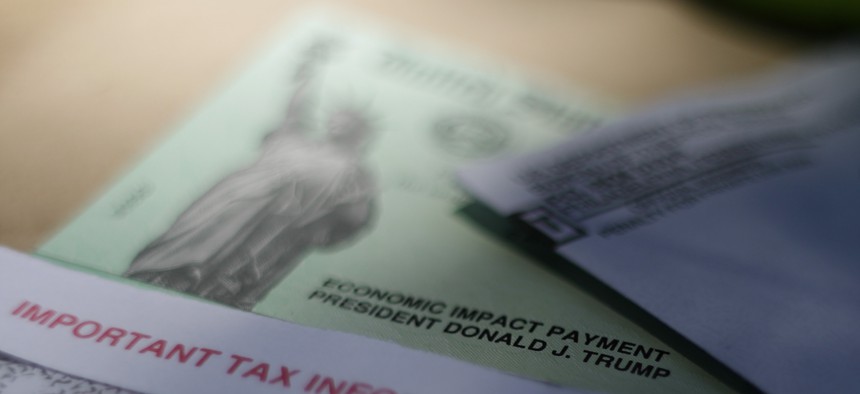How Did Americans Spend Their Stimulus Payments? New Data Offers Clues.

A stimulus check issued by the IRS to help combat the adverse economic effects of the coronavirus outbreak. AP Photo
Findings from a new Census Bureau survey show how people at different income levels have used the money in different ways.
More than two-thirds of people living in households where someone has received or expects a cash payment under a federal coronavirus relief program have used the money mostly for expenses—particularly costs like housing, utilities and food, according to new survey data.
The Census Bureau released the estimates this week. They’re derived from the latest edition of the bureau’s “Household Pulse Survey,” which aims to measure a number of the effects that the coronavirus pandemic is having on Americans households.
Data collected between June 11 and 16 indicate that roughly 210 million people live in households where someone already received, or anticipates receiving, one of the payments, which can total up to $1,200 for individuals earning as much as $75,000 a year.
Among that group, estimates based on the survey show that about 147 million, or 70%, planned to use, or had used, the money mostly for expenses. Another 15% said the money would go mostly towards paying off debt, and about 14% said they’d mostly add it to savings.
The survey results also provide a window into the types of expenses people are using the money for. Here people could select multiple categories if, say, they planned to spend some of the money on food and some of it on rent. So the results don’t add up to 100%.
About 80% of households that planned to use their stimulus check mostly for expenses put at least some of the money towards food, including both groceries and eating out, the survey found. About 62% said the same for rent and mortgage payments. And around 62% of this group also said they’d use some of the money for utility, internet or phone bills.
A statistician and an economist at the Census Bureau pointed out in an analysis of the latest survey that adults in households with incomes between $75,000 and $99,999 were more likely to use their stimulus payment to pay off debt or save compared to other households.
(For single individuals earning above $75,000 a year, the payments step down in increments until phasing out completely above $99,000. There’s a similar framework in place with different income thresholds for married couples who file taxes jointly.)
Over one-third of adults in the $75,000 to $99,999 income bracket said they’d use the money mostly for savings or paying down debt.
In contrast, the analysis by the Census employees says that nearly 88% of adults in households with incomes of $25,000 or less planned to use their stimulus payments to meet expenses.
The Census Bureau estimates come as some states, like Arizona, Florida and Texas, are dealing with upswings in coronavirus infections. The disease outbreak has been badly disrupting the nation and its economy since March, causing severe unemployment.
The stimulus payments were included in the roughly $2 trillion coronavirus relief package, known as the CARES Act, that President Trump signed into law in late March.
Lawmakers in the Democratic-controlled House passed a bill in May that calls for additional direct payments to households.
President Trump has voiced support to aides for sending out another round of checks, The Washington Post reported this week. But whether a policy like that can gain enough support to pass in the Republican-controlled Senate is uncertain.
Bill Lucia is a Senior Reporter for Route Fifty and is based in Olympia, Washington.
NEXT STORY: U.S. House Approves D.C. Statehood for First Time in History






